THE WILDERNESS
FIRST AID HANDBOOK
Grant S. Lipman, MD, FACEP, FAWM
Clinical Assistant Professor of Surgery and Emergency Medicine,
Associate Director, Wilderness Medicine Fellowship
Stanford University School of Medicine

Skyhorse Publishing
Disclaimer: It is the responsibility of the reader to take a wilderness first aid or equivalent training course, as the information contained in this book is not intended as a substitution for a course or practical experience. To the fullest extent of the law, neither the Author nor the Publisher assumes any liability for any injury, disability, death, and/or damage to persons or property resulting from any use or operation of any methods, products, instructions, or ideas contained in the material herein.
Use of trade or brand names in this publication is for illustrative purposes only and does not imply endorsement by the author or the publisher.
Copyright 2013 by Wildside Medical Education, LLC
All Rights Reserved. No part of this book may be reproduced in any manner without the express written consent of the publisher, except in the case of brief excerpts in critical reviews or articles. All inquiries should be addressed to Skyhorse Publishing, 307 West 36th Street, 11th Floor, New York, NY 10018.
Skyhorse Publishing books may be purchased in bulk at special discounts for sales promotion, corporate gifts, fund-raising, or educational purposes. Special editions can also be created to specifications. For details, contact the Special Sales Department, Skyhorse Publishing, 307 West 36th Street, 11th Floor, New York, NY 10018 or info@skyhorsepublishing.com.
Skyhorse and Skyhorse Publishing are registered trademarks of Skyhorse Publishing, Inc., a Delaware corporation.
Visit our website at www.skyhorsepublishing.com.
10 9 8 7 6 5 4 3 2 1
Library of Congress Cataloging-in-Publication Data is available on file.
ISBN: 978-1-62087-375-5
Printed in China
This book is dedicated to my father for introducing me to wilderness medicine at an impressionable age, my mother for her encouragement in all my endeavors, and my wife, Ashlie, for her love, friendship, and unwavering support for all my wilderness pursuits.
Acknowledgments
Thank you to all the wilderness first aid instructors and staff at Stanford Outdoor Education for their feedback, Andy Fields for getting me involved and for his constant enthusiasm, and Antja Jean Thompson and Dr. Charlene Kiang for all their assistance.
All illustrations by Willie Azali
CONTENTS
INTRODUCTION
People who work, live, travel, and recreate in the outdoors have specialized medical needs not adequately fulfilled by traditional first aid. Remote locations, arduous conditions, paucity of diagnostic and therapeutic equipment, and a need to make critical decisions often without outside communication have led to development of wilderness medicine as a specialty. These situations may be found in remote wilderness, the developing world, or in urban areas following natural disasters. This book is to be used as a guide to augment the skills and training learned in a typical wilderness first aid course. The intention is to assist the lay public, outdoor professionals, and instructors as well as members of wilderness first aid classes with useful and practical information that complements their training. Some elective skills are included, which the individual can decide to utilize depending on his or her comfort level and specific training.
This book is written for those who have basic first aid knowledge, not necessarily those with advanced degrees in medicine or pre-hospital care. The American Heart Association has limited components of their resuscitation curriculum, recognizing that some tasks may be difficult for laypersons to competently perform. Similarly, this book acknowledges that certain knowledge and procedures are outside the scope of the average wilderness first aid providers knowledge, and thus limits the use of technical terms or advanced techniques that may be unfamiliar to some readers or impractical based on the wilderness setting. This book provides easy-to-follow protocols and instructions to assist those encountering most wilderness emergencies.
While the contents of this book are meant to assist in managing a medical emergency in a remote environment, the information is generalizable to any setting where the reader is first on the scene. The protocols contained in this book are to be used as guidelines and by no means as a substitution for common sense or definitive medical care. A rescuer is liable for his or her own actions and should never undertake a medical procedure he or she is not comfortable with or which is not absolutely necessary, unless the rescuer believes the victim may lose his or her life or limb without intervention.
Most medicines discussed in this book can be purchased over the counter. Consult Appendix A for dosing specifics. Consult with a doctor concerning the potential side effects, complications, or contraindications of any medications you carry. Similarly, ensure that there are no known allergies to the medicines you use.
Travel in the wilderness is an inherently risky activity, as one often travels to remote locations for adventure, solitude, and serenity. Ultimately, the ethos of self-reliance found in the backcountry is epitomized by a wilderness medical emergency. These protocols assume knowledge and implementation of patient assessment systems that should not be ignored when acting on these protocols. Familiarize yourself with the information within these pages before venturing into the backcountry to minimize the chances that an accident will have to be an emergency.
 This danger symbol next to the red flags of a patients symptoms serves as an indicator of a dangerous disease process that may necessitate imminent evacuation to definitive medical care. If any of these red flags are observed, start early preparations for a potential evacuation. Consideration of the terrain, time of day, and weather are all potential issues in expediting a timely evacuation.
This danger symbol next to the red flags of a patients symptoms serves as an indicator of a dangerous disease process that may necessitate imminent evacuation to definitive medical care. If any of these red flags are observed, start early preparations for a potential evacuation. Consideration of the terrain, time of day, and weather are all potential issues in expediting a timely evacuation.
 This helicopter symbol next to the evacuate assumes a medical emergency that requires a higher level of care via Emergency Medical Services (EMS). All evacuations assume the emergency is taking place in a setting where communication is likely not possible. The severity of the emergency, the potential for the patient to decompensate, the availability (or lack thereof) of outside communication, and the logistical and timely constraints of a rescue versus self-evacuation all need to be taken into consideration. If patients are able to ambulate on their own without endangering themselves or others, self-evacuation may be a quicker and better option in the wilderness environment. If a victim is unable to walk, or you expect that the ability to ambulate may shortly become compromised, you should likely send for a rescue. If the decision is made to send a messenger to initiate an EMS rescue, two people (buddy system) are better than one to ensure the safe delivery of both the message and messengers.
This helicopter symbol next to the evacuate assumes a medical emergency that requires a higher level of care via Emergency Medical Services (EMS). All evacuations assume the emergency is taking place in a setting where communication is likely not possible. The severity of the emergency, the potential for the patient to decompensate, the availability (or lack thereof) of outside communication, and the logistical and timely constraints of a rescue versus self-evacuation all need to be taken into consideration. If patients are able to ambulate on their own without endangering themselves or others, self-evacuation may be a quicker and better option in the wilderness environment. If a victim is unable to walk, or you expect that the ability to ambulate may shortly become compromised, you should likely send for a rescue. If the decision is made to send a messenger to initiate an EMS rescue, two people (buddy system) are better than one to ensure the safe delivery of both the message and messengers.
If the reader of this book is unsure of the necessity of an evacuation, err on the side of caution. When in doubt, get out.
ASSESSMENT SYSTEM
General Comments
Before you are able to administer first aid, an assessment must be made in an orderly process to ensure that both the rescuer and the victim are kept safe. First size up the scene, then undertake a primary followed by secondary assessment. If a problem is found, stop and fix it before moving on.

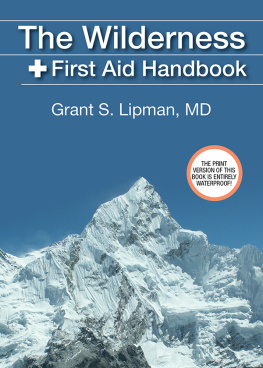
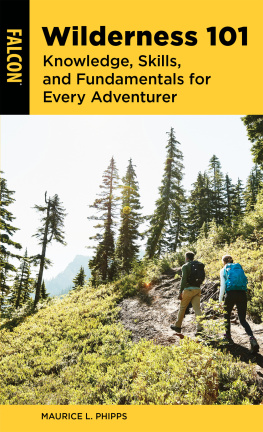
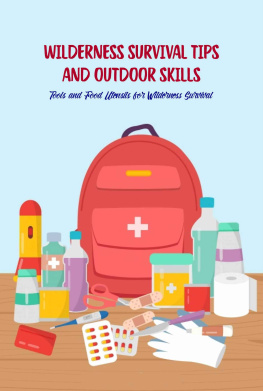
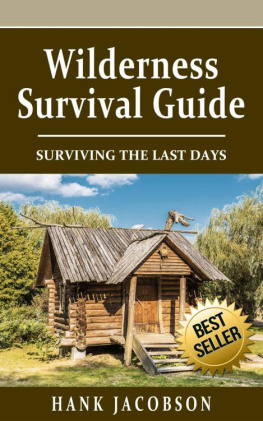

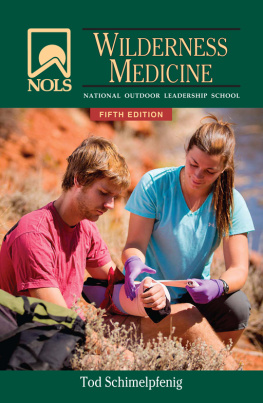
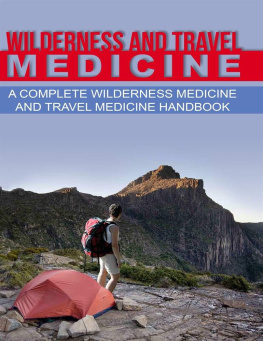


 This danger symbol next to the red flags of a patients symptoms serves as an indicator of a dangerous disease process that may necessitate imminent evacuation to definitive medical care. If any of these red flags are observed, start early preparations for a potential evacuation. Consideration of the terrain, time of day, and weather are all potential issues in expediting a timely evacuation.
This danger symbol next to the red flags of a patients symptoms serves as an indicator of a dangerous disease process that may necessitate imminent evacuation to definitive medical care. If any of these red flags are observed, start early preparations for a potential evacuation. Consideration of the terrain, time of day, and weather are all potential issues in expediting a timely evacuation. This helicopter symbol next to the evacuate assumes a medical emergency that requires a higher level of care via Emergency Medical Services (EMS). All evacuations assume the emergency is taking place in a setting where communication is likely not possible. The severity of the emergency, the potential for the patient to decompensate, the availability (or lack thereof) of outside communication, and the logistical and timely constraints of a rescue versus self-evacuation all need to be taken into consideration. If patients are able to ambulate on their own without endangering themselves or others, self-evacuation may be a quicker and better option in the wilderness environment. If a victim is unable to walk, or you expect that the ability to ambulate may shortly become compromised, you should likely send for a rescue. If the decision is made to send a messenger to initiate an EMS rescue, two people (buddy system) are better than one to ensure the safe delivery of both the message and messengers.
This helicopter symbol next to the evacuate assumes a medical emergency that requires a higher level of care via Emergency Medical Services (EMS). All evacuations assume the emergency is taking place in a setting where communication is likely not possible. The severity of the emergency, the potential for the patient to decompensate, the availability (or lack thereof) of outside communication, and the logistical and timely constraints of a rescue versus self-evacuation all need to be taken into consideration. If patients are able to ambulate on their own without endangering themselves or others, self-evacuation may be a quicker and better option in the wilderness environment. If a victim is unable to walk, or you expect that the ability to ambulate may shortly become compromised, you should likely send for a rescue. If the decision is made to send a messenger to initiate an EMS rescue, two people (buddy system) are better than one to ensure the safe delivery of both the message and messengers.